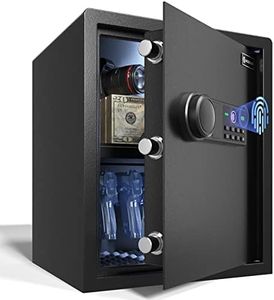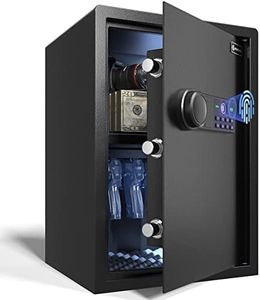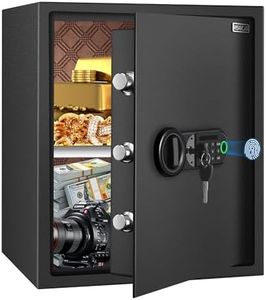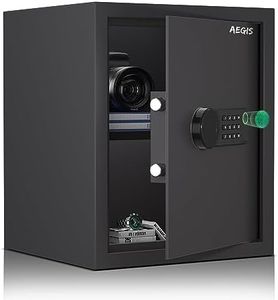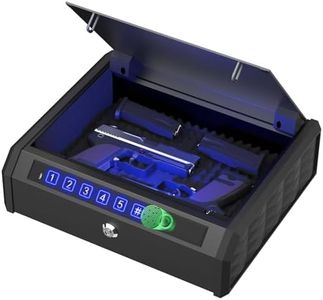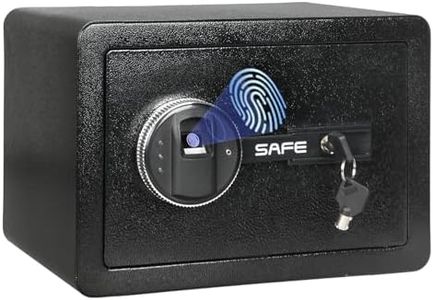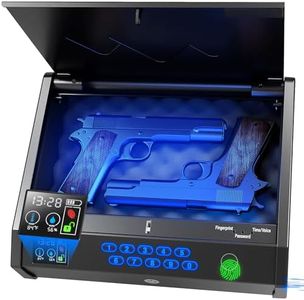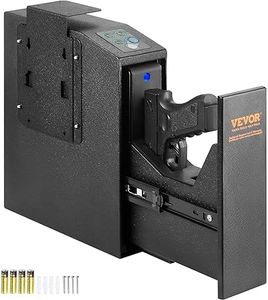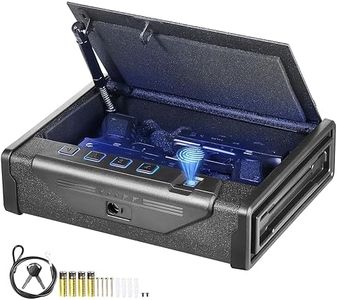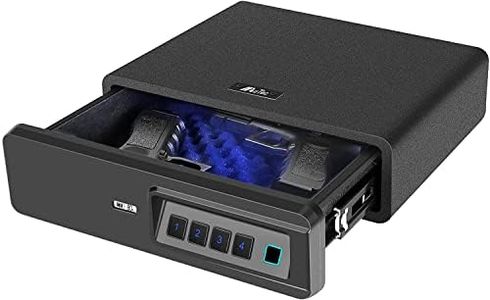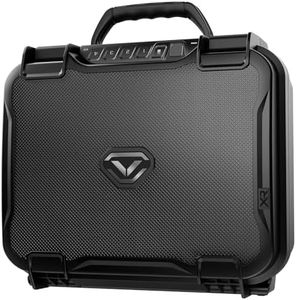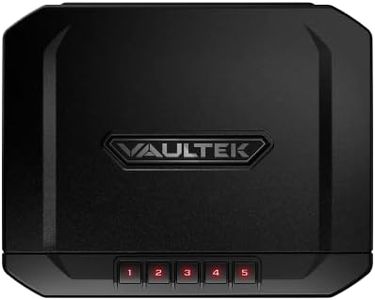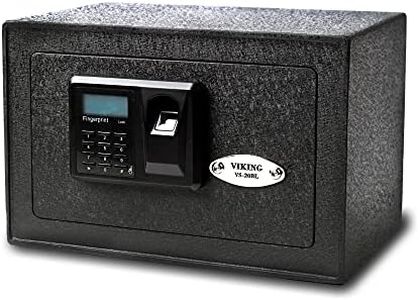We Use CookiesWe use cookies to enhance the security, performance,
functionality and for analytical and promotional activities. By continuing to browse this site you
are agreeing to our privacy policy
10 Best Fingerprint Pistol Safes
From leading brands and best sellers available on the web.Buying Guide for the Best Fingerprint Pistol Safes
Choosing a fingerprint pistol safe is all about balancing your desire for quick, secure access with reliable protection for your firearm. These safes use advanced biometric technology to keep your pistol away from unauthorized hands while allowing you fast entry in emergencies. When shopping, consider not only the fingerprint technology itself but also the build quality, capacity, and ease of mounting so you select a safe that fits your storage needs and lifestyle. Your unique priorities—such as how quickly you need access, where you’ll store the safe, and how many pistols you want to secure—should guide your decision-making process.Fingerprint Sensor QualityThe fingerprint sensor is the technology that reads and recognizes your fingerprint to unlock the safe. Higher quality sensors are more accurate and faster, reducing the chance of false rejections or failed scans. Sensors vary from optical to capacitive and semiconductor types, with the latter generally offering better reliability. Entry-level safes might have less sensitive sensors that work slower or struggle with sweaty or dirty fingers, while higher-end ones offer almost instant access and are more forgiving of different finger conditions. Choose a sensor quality that matches how frequently and quickly you expect to access your firearm and how much you trust the sensor not to fail when needed.
Fingerprint Memory CapacityThis refers to how many individual fingerprints the safe can store. Some safes store just a few, suitable for a single user, while others accommodate dozens for shared accessibility among family members or trusted individuals. If only you will be using the safe, a lower capacity suffices, but if others may need access, look for higher memory capacity. Pick the capacity based on how many different people or finger positions (multiple fingers per person for backup) you want to program for reliable, flexible entry.
Build Material and ConstructionThe material and construction determine how resistant the safe is to tampering or forced entry. Materials range from lightweight metals or plastic for portability to heavy-gauge steel for robust protection. Simpler safes might be easier to move or hide, but heavier-duty builds offer more security. Assess whether your key concern is theft resistance or simply keeping firearms out of reach from children, and pick a construction quality that aligns—thinner walls for convenience, thicker steel for greater security.
Locking Mechanism BackupAlmost all fingerprint safes have backup entry options like keys or numeric codes in case the sensor fails or the battery dies. Simpler backup mechanisms can be quicker to use but may compromise security if not managed cautiously. Decide how much you value having alternative entry methods for emergencies versus maximum security. If you’re concerned about forgetting codes or losing keys, look for a safe that offers simple but secure backup methods.
Interior Space and CapacityThis tells you what and how much you can store—some safes are built for a single handgun, while others accommodate multiple firearms, magazines, or even important documents. Compact options are ideal for nightstands or discreet car storage, while larger safes are suited for storing several pistols or other valuables at once. Consider how many and what type of pistols you plan to keep secure to decide on the right interior size for your needs.
Mounting and Portability OptionsSome pistol safes are designed for fixed mounting (e.g., to a nightstand, wall, or car frame) for added security, while others are portable for traveling or moving between locations. Fixed safes deter theft but are less flexible if you need to move the safe. Portable safes are easier to reposition but can be taken if stolen. Determine where you’ll primarily use the safe and how likely you are to need to move it to pick suitable mounting or portability features.
Power Source and Battery LifeMost fingerprint safes operate using batteries, though some have AC adapters as an option. Battery life varies—some last a few months, others over a year. Consider how often you want to replace or charge batteries; longer life means less hassle. If your safe will be used in critical situations, make sure to choose one with a clear, low-battery warning and an easy-to-access battery compartment for timely maintenance.
